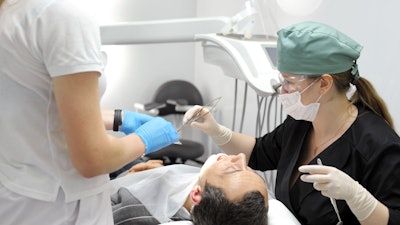
Adults taking medicine for attention deficit hyperactivity disorder (ADHD) may need more restorations, suggesting a significant effect that stimulant medications may have on oral health. The study, which included more than 210,000 people, was published on June 8 in Special Care in Dentistry.
Each additional 1,000 mg of the central nervous stimulant methylphenidate taken heightened the odds of the person needing restorative treatment. This study is believed to be the first evidence of the effect and dose response of methylphenidate use and the prevalence of restoration needs in young adults with ADHD, the authors wrote.
“Both ADHD and MP (methylphenidate) contribute to requirement of restorative treatments,” wrote the authors, led by Dr. Haggai Schermann of the Tel Aviv Sourasky Medical Center, which is affiliated with Tel Aviv University in Israel.
Currently, the use of methylphenidate is prevalent in up to 7.5% of children between the ages of 6 and 18 and in up to 35% of college students. Research has shown that methylphenidate can reduce bone density and cause slower growth in kids; however, the role of this medication in dental health is limited, according to the study.
To evaluate the effect and dose response of methylphenidate use on the restorative treatment needs among adults with ADHD, a retrospective study of military recruits between the ages of 18 and 25 who served for one to four years between 2005 and 2017 was conducted. Researchers accessed the medical records of 213,604 recruits.
Of those patients, 6,875 had ADHD and received treatment with methylphenidate, 6,729 had untreated ADHD, and 200,000 did not have the condition. The outcome was needing at least one restorative treatment during the study period, the authors wrote.
The frequency for which restorative care was needed among those treated for ADHD was 24%, and these adults also had the highest average number of treatments per person at 0.88 (± 1.69). It was 22% among those with untreated ADHD and 17% for healthy patients (p < 0.0001), they wrote. The average number of treatments per person in patients with untreated ADHD was 0.78 (± 1.54), and it was 0.61 (± 1.72) for healthy patients, they wrote.
Multivariate analysis revealed that the dose-response correlation between methylphenidate use and the odds of having at least one restorative treatment was confirmed (odds ratio = 1.006 for each additional 1,000 mg of methylphenidate; 95% confidence interval, 1.004 to 1.009). The findings translate into a heightened relative risk of 0.5% for each additional 1,000 mg of medication taken. The patients in the study were exposed to about 2,300 mg in three months, but it may be necessary for some patients to take up to 100 mg daily, the authors wrote.
The study had several limitations, including its retrospective design, they acknowledged. Since the pathophysiology behind the link between ADHD, methylphenidate, and restorative treatment remains uncharacterized, the topic needs further exploration, the authors wrote.
“Chronic MP medication among young adults leads to an elevated need for restorative treatments,” Schermann and colleagues wrote.




















